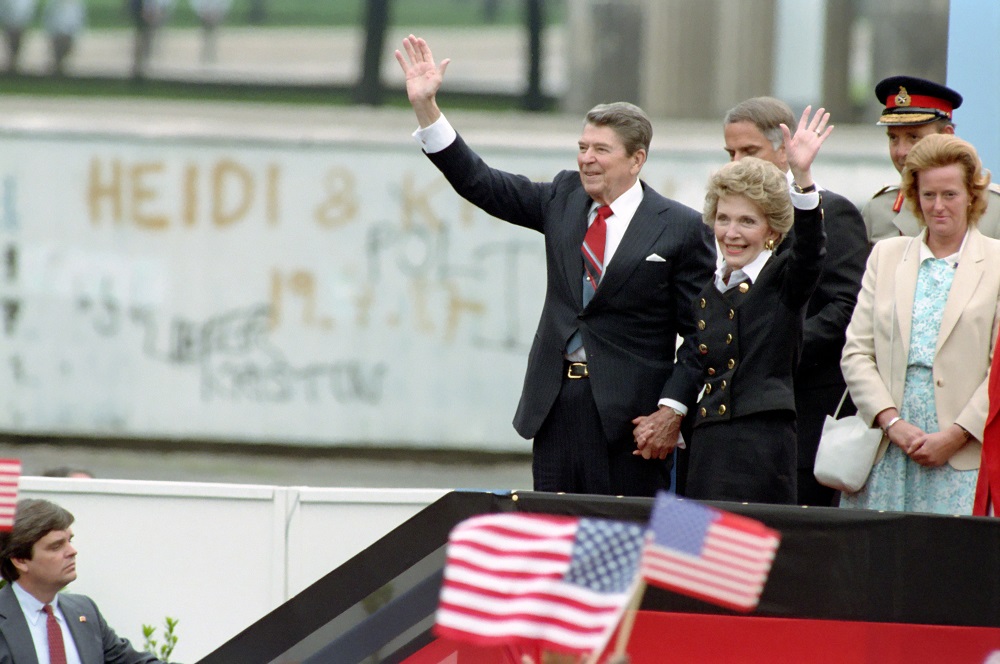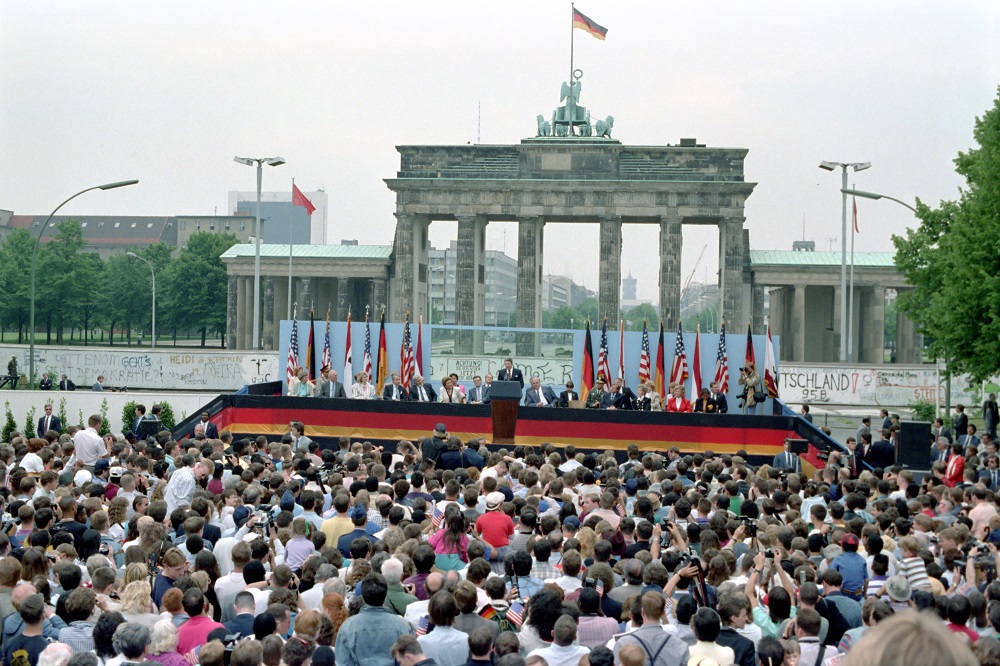How did the fall of the Berlin Wall affect both Germany and the rest of the world?
On November 9, 1989, the Berlin Wall—arguably the most powerful symbol of the Cold War—fell. It was a moment that signaled the beginning of the end for the Soviet Union, the reunification of Germany, and the triumph of Western democracy.
But decades later, the story is far from simple. The fall of the Berlin Wall wasn’t just a German event. It was deeply influenced by American foreign policy, Cold War tension, and global ideological struggles that still shape politics today.
In this article, I revisit the fall of the Berlin Wall—not just as a historical moment, but as a complex turning point in U.S.-German relations, global power shifts, and ongoing debates about freedom, surveillance, and national identity.

The Wall: Built to Divide
The Berlin Wall was constructed in 1961 by the German Democratic Republic (East Germany), under pressure from the Soviet Union. Its purpose was simple: to stop East Germans from fleeing to West Berlin, which was controlled by the Western Allies (the U.S., U.K., and France).
Between 1949 and 1961, nearly 3.5 million East Germans escaped through Berlin. This mass exodus was a clear sign that socialism in the East was failing. The Wall was meant to plug the hole, and it worked. But at a massive cost.
Families were split. Lives were lost—over 140 people died trying to cross it. Berlin became a prison city. And for nearly 30 years, the Wall stood as a physical and ideological reminder of the “Iron Curtain” dividing East and West.
America’s Role: Defender of the West or Cold War Opportunist?
From day one, the United States positioned itself as the protector of West Berlin and the ideals of freedom and democracy. American presidents made symbolic visits and strong speeches.
In 1963, John F. Kennedy famously declared, “Ich bin ein Berliner,” signaling U.S. solidarity. In 1987, Ronald Reagan stood at the Brandenburg Gate and urged, “Mr. Gorbachev, tear down this wall!”
These moments are remembered as high points of moral leadership. But critics argue they were also moments of Cold War propaganda. America had its reasons for keeping Germany divided—primarily to keep Soviet influence contained and maintain strategic NATO positioning in Western Europe.
Some historians now question whether America truly wanted unification during the Cold War, or whether it preferred a divided Germany that was easier to control.
The Fall: a perfect storm
So, how did the Wall actually fall? While U.S. pressure, especially through economic and military superiority, played a role, it was not the only factor.
The fall of the Wall was a result of internal resistance in East Germany and other Eastern Bloc countries, economic collapse across the Soviet Union, massive peaceful protests in Leipzig and other cities, and reform movements in Poland, Hungary, and Czechoslovakia, but also mistakes by East German officials, including a press conference gaffe that led to border guards opening the gates without clear orders
By late 1989, the East German regime had lost control. The people demanded change, and they got it. But even here, controversy remains. Was the fall truly a victory for the people? Or was it engineered and accelerated by Western governments to exploit Soviet weakness?
What America gained (and lost)
The collapse of the Berlin Wall was quickly followed by the dissolution of the Soviet Union. For America, this meant the end of the Cold War—a moment of unchallenged global supremacy. It was the birth of what many called the “American century.”
But this victory was double-edged. NATO expanded eastward, angering post-Soviet Russia, and the “unipolar moment” led to U.S. overreach in Iraq, Afghanistan, and elsewhere. American capitalism, while celebrated, was also blamed for global inequality.
Many Germans argue that while the West “won,” East Germans paid a price—losing jobs, homes, and even cultural identity in the process of reunification. America’s version of freedom came with costs.
Germany today: united, but unequal
More than three decades later, Germany is technically reunified, but social and economic divisions remain. Eastern Germany still lags behind the West in terms of income, employment, and political power.
Many former East Germans feel forgotten or looked down on, fueling the rise of far-right parties like AfD (Alternative für Deutschland) in the East.
This has led some to question whether reunification was truly successful, or whether it simply replaced one system of control with another, more subtle one.
America and Germany now: friends, rivals, or both?
Post-Wall, U.S.-Germany relations have been complex. Germany is a major NATO member and a key ally in Europe. But tensions have also emerged: disagreements over Iraq and the War on Terror, the NSA spying scandal, where it was revealed that the U.S. spied on German Chancellor Angela Merkel.
While both nations support democracy, their foreign policies often diverge. Germany tends to prefer diplomacy and economic leverage, while the U.S. leans toward military strength and global intervention.
The Legacy of the Berlin Wall in a fatidic digital era
Ironically, while the Berlin Wall was torn down in 1989, new “walls” have gone up—not physical, but digital and ideological. The Internet has become a new battleground for surveillance, misinformation, and control. Plus, Nationalism and “digital borders” are on the rise.
Even Berlin, once a symbol of openness, has seen increased surveillance and political division. In some ways, the promise of the Wall’s fall—that freedom and unity would follow—feels incomplete.
The Cold War ended, but new cold conflicts have emerged: between the West and China, Russia, and even within democratic societies.

Was the Fall of the Berlin Wall Overhyped?
Here’s where the controversy sharpens. For decades, the fall of the Wall has been treated as a global victory for democracy and capitalism. But some argue this is an oversimplified and Western-centric view.
Reunification was rushed, with little input from ordinary East Germans, but Western neoliberal economics flooded the East, often wiping out local businesses and jobs.
The global imbalance of power post-1990 may have sown the seeds for future conflict. These critiques don’t deny the Wall’s horror or the importance of freedom, but they challenge the narrative that everything got better after it fell.
Now, I want to ask you a question: Was America’s involvement in Germany seen as positive or negative? How do you see this situation? I know it might be a difficult topic to approach, but for that, we have the comments section, so don’t be shy and let’s discuss everything you have in mind.
Conclusion:
The fall of the Berlin Wall is one of the most iconic events of the 20th century. But like all historical moments, its legacy is messy, layered, and still unfolding.
Germany is now a leading European power. America remains a dominant, though challenged, force globally. But the world that emerged after 1989 is not the one many people expected. New walls—both visible and invisible—continue to divide nations, classes, and ideas.
The fall of the Wall may have ended the Cold War, but the struggle for freedom, truth, and unity is far from over.
For this article and not only I used this book as the main reference. Check it out and add it to your collection if you like it! The Fall of the Berlin Wall: The History of the Unification of Germany and the End of the Cold War is available on Amazon in paperback and audiobook formats.
A couple of weeks ago, I wrote a little something about the Berlin Wall, so if you’re curious, go click on this link here: The Fall of the Berlin Wall: Effects upon the World.
